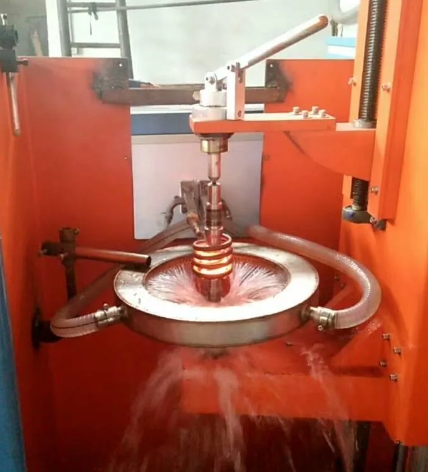- 03
- Nov
Những yếu tố nào cần được xem xét khi tùy chỉnh thiết bị cứng cảm ứng?
What factors need to be considered when customizing thiết bị làm cứng cảm ứng?
1. Hình dạng và kích thước phôi
Đối với phôi lớn, thanh và vật liệu rắn, nên sử dụng thiết bị gia nhiệt cảm ứng với công suất tương đối cao và tần số thấp; đối với các phôi nhỏ, đường ống, tấm, bánh răng, v.v., nên sử dụng thiết bị dập tắt tần số cao với công suất tương đối thấp.
2. Chiều sâu và diện tích phôi cần được gia nhiệt
If the heating depth is deep, the area is large, and the whole is heated, induction heating equipment with high power and low frequency should be selected; if the heating depth is shallow, the area is small, and part of the heating is heated, high-frequency quenching equipment with relatively low power should be selected.
3. Tốc độ gia nhiệt cần thiết cho phôi
The heating speed required is fast, and the induction heating equipment with relatively large power and relatively high frequency should be selected.
4. Thời gian làm việc liên tục của thiết bị
Continue the task for a long time, and relatively choose induction heating equipment with slightly higher power.
5. The connection interval between the sensing components and the equipment
The connection is long, and even requires the use of water-cooled cables for connection, and induction heating equipment with relatively high power should be selected.
6. Yêu cầu quy trình phôi
For quenching, welding and other processes, the power of the quenching machine tool is relatively small, and the frequency is higher. For processes such as annealing and tempering, the power of the quenching machine tool is larger and the frequency is lower. Red punching, hot forging, melting, etc., need to be thoroughly For a process with good thermal results, the power of the quenching machine tool should be larger and the frequency should be lower.
7. Thông tin của phôi
Among the metal materials, the higher the melting point, the higher the power, the lower the melting point, the lower the power, the lower the resistivity, and the lower the power.

